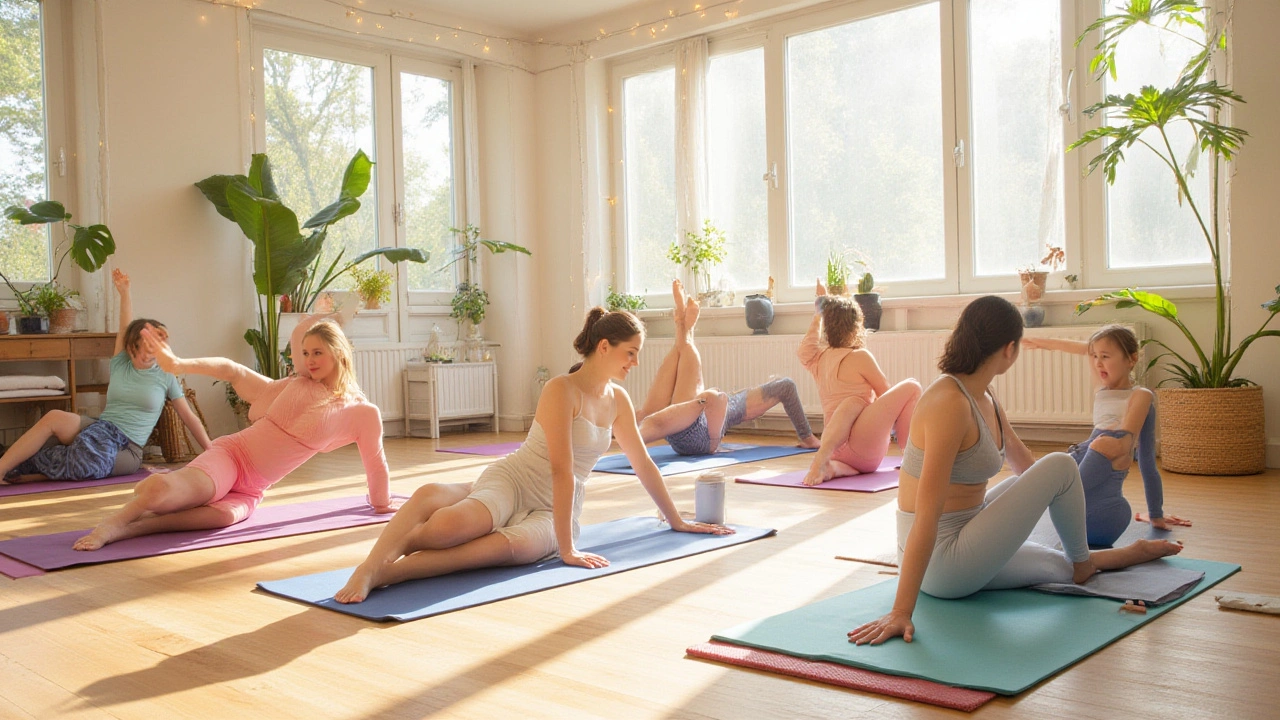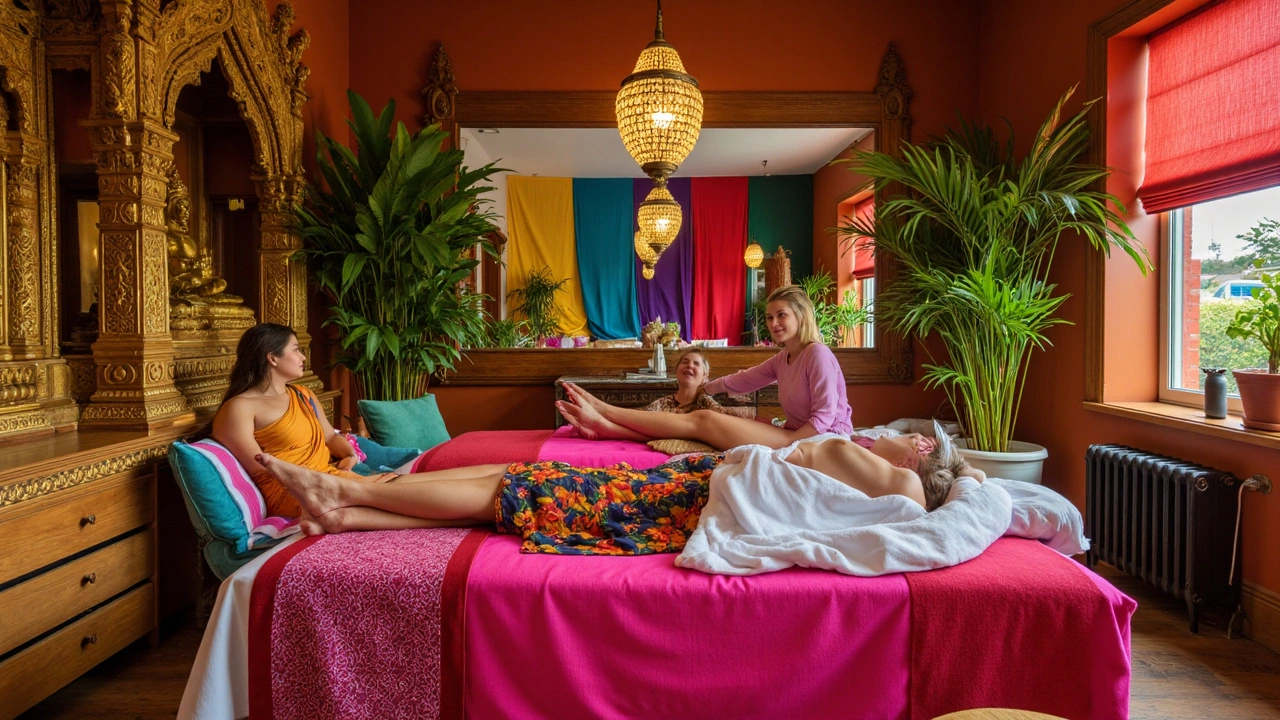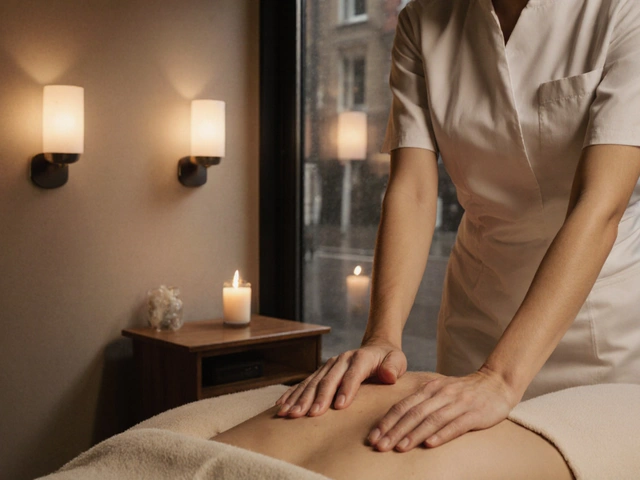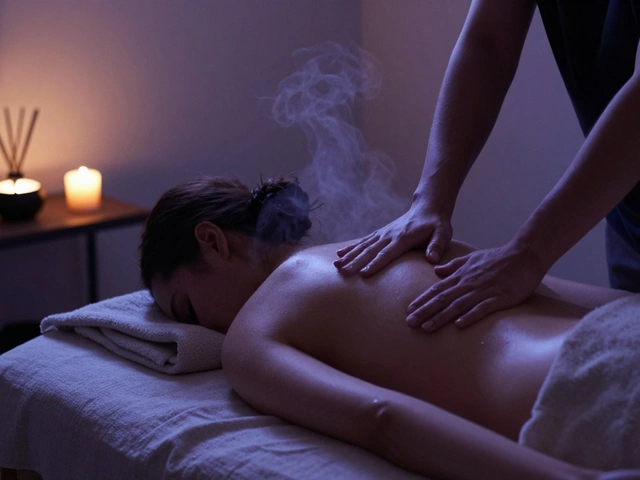Think a good self-care routine is all about face masks and bubble baths? Thai massage takes it to the next level. Simply put, it’s a hands-on way to stretch, unwind, and release tight spots you probably didn’t realize were tense. You don’t need fancy gear or a special occasion—just a little know-how and a quiet spot at home.
Here’s the cool part: Thai massage isn’t just about lying there. There’s movement—gentle pulling, stretching, and even a bit of guided yoga. If you ever wished a massage would stretch you out like a lazy cat, this is your answer. The best part? You can pick up the basics and start adding miniature Thai massage routines to your week, even if you’re on a tight schedule or a budget.
- What Makes Thai Massage Unique
- Easy Ways to Try Thai Massage at Home
- Tips for Booking a Thai Massage Session
- How Thai Massage Fits into Regular Self-Care
What Makes Thai Massage Unique
Ever noticed how most massages just have you lying there while someone kneads your muscles? Thai massage plays by a whole different set of rules. Instead of just working on sore spots, it’s all about getting your whole body moving, stretching, and realigning. It’s been practiced for over 2,500 years, and at its core, Thai massage blends deep muscle pressure, assisted stretching, and breathing techniques to balance out both the body and mind.
What sets it apart? For one, you stay fully clothed, usually in comfy, loose gear—not slathered in oil and towels. The practitioner uses not just their hands, but also elbows, knees, and even feet to apply pressure and help you stretch into deeper, yoga-like poses. Don’t worry; it doesn’t have to be intense. Therapists know how to adapt each move to your body’s needs.
- thai massage follows energy lines in the body, known as “Sen” lines. Think of these like invisible highways for your body’s energy. Gentle pressure along these points helps with flexibility, reduces soreness, and can boost your mood, too.
- Unlike Swedish or deep tissue massages, Thai massage is often called “lazy yoga,” since the therapist moves your body through yoga-like stretches while you just relax.
- Most sessions skip massage tables and happen on mats on the floor, giving the therapist better leverage for stretching you out.
Curious about the benefits? Research from Chulalongkorn University in Bangkok found that folks getting Thai massage saw big drops in muscle tension and stress levels, plus noticeable improvements in range of motion. That’s not just feel-good talk—you can see the difference after only a few sessions.
| Massage Style | Main Features | Typical Setting |
|---|---|---|
| Thai Massage | Stretching, acupressure, no oil, full clothing | Mat on floor |
| Swedish Massage | Oil-based, muscle kneading, relaxation | Massage table |
| Deep Tissue | Strong pressure, targets knots, oil used | Massage table |
Fact is, Thai massage is more than a treat. It’s a workout, a stretch, and deep chill time all rolled into one. You get flexibility, better posture, and less stress in about an hour, with no fancy equipment or messy oils needed.
Easy Ways to Try Thai Massage at Home
So, you want to add Thai massage to your self-care routine, but going to a spa isn’t always an option? Trying it at home is easier than you think. Unlike most massages, you don’t need fancy oils or a massage table. You just need a soft mat on the floor, some clear space, and a bit of time.
First, start with the basics. Thai massage uses more stretching than pressure, and focuses on big muscles like your legs, back, and shoulders. Most people can do simple moves themselves or with a partner. Here’s how to get started even if you’ve never tried before:
- Thai massage videos: There are great tutorials on YouTube from certified therapists. Look up "beginner Thai massage at home" and follow along with short daily routines (about 5-15 minutes long). They show you the right moves and breathing techniques.
- DIY routines: Try a simple sequence like this: lie on your back, hug your knees to your chest, gently rock side-to-side. Sit up and do a seated twist, holding for 10-20 seconds on each side. For shoulders, clasp hands behind your back and pull gently to open your chest.
- Partner up: If you have a friend or partner, you can do stretches together. One easy move is seated back-to-back stretching—just sit down, link arms, and carefully lean away from each other. You’ll both feel a good stretch through your spine.
- Rolling tools: Massage balls or a foam roller can stand in for some thumb or palm pressure if you’re solo. Gently roll out legs or back, pausing over tense spots.
When practicing, keep things slow and comfortable. Thai massage isn’t supposed to hurt. Aim for once or twice a week at first, especially if you’re new to stretching.
Curious if a few minutes really make a difference? Take a look at this quick table. These benefits are based on studies tracking flexibility and relaxation after short Thai massage routines at home:
| Benefit | Average Time Noticed | Notes from Users |
|---|---|---|
| Less muscle tension | After 2-3 sessions | Legs and lower back most improved |
| More flexibility | After 4-6 sessions | Hamstrings and hips easier to move |
| Better sleep | Right away (first week) | Especially after evening sessions |
One last tip: set the mood. Dim the lights, play calming music, and put your phone away. It’s about relaxing, so don’t stress about doing every move perfectly. The key is to just show up and give your body a chance to unwind.
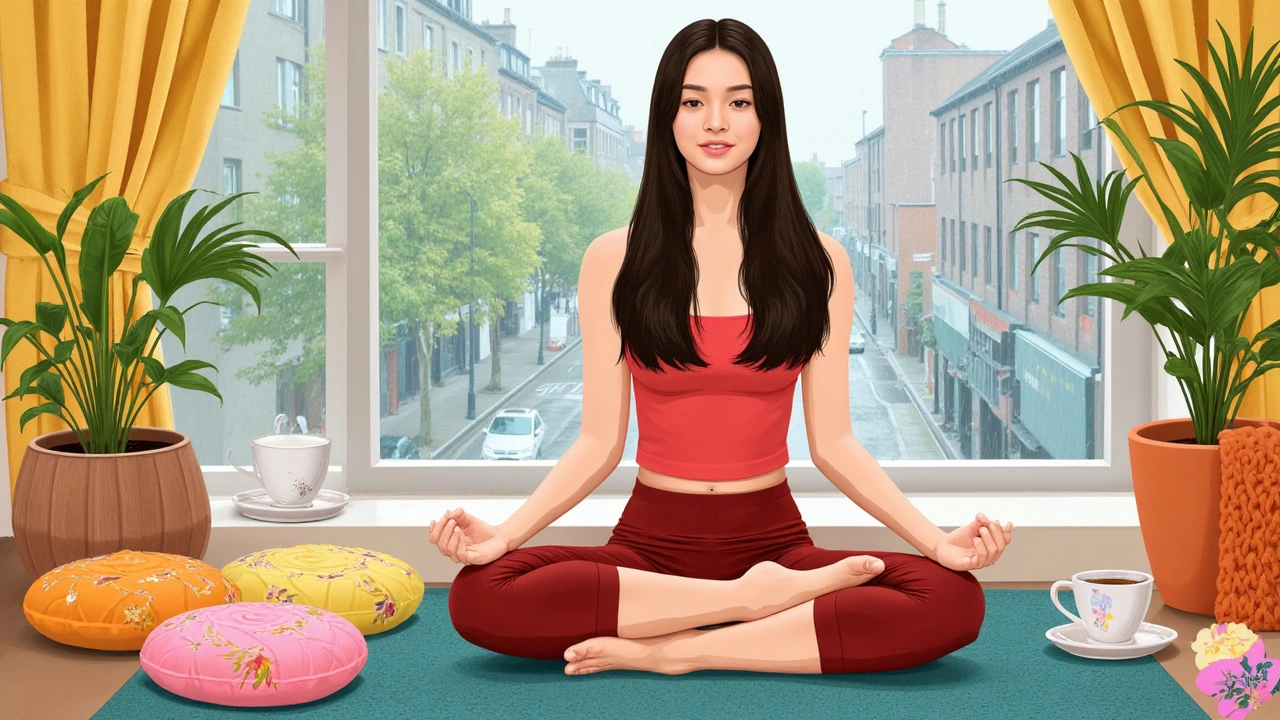
Tips for Booking a Thai Massage Session
Ready to give Thai massage a real shot, not just DIY at home? Before you search for the nearest spot on your phone, there are a few things you’ll want to check to make sure you get the most out of it. Getting the booking right helps you avoid weird surprises and ensures you land in good hands. Here’s what matters most:
- Look for licensed therapists. Not all spas train their staff equally, and in many places, certification is a legal requirement. So, always check for license info on the spa’s website or ask directly over the phone.
- Read reviews, especially verified ones on Google or Yelp. Happy customers will mention things like therapist professionalism, comfort, and clean spaces. Bad reviews? Don’t ignore obvious red flags like rushed sessions or hidden fees.
- Decide on the type you want. There are classic Thai massages (fully clothed, lots of stretching) and oil Thai massages (more relaxing, gentle pressure). If you’re new, classic Thai offers the traditional experience, but tell them if you want less pressure—some say it can get pretty intense!
- See what’s included. Good spas are upfront about session length and what’s covered (herbal compress, oil, footwork). Ask if you’ll have privacy or be in a shared room, since some places use open layouts for traditional Thai massage.
- Ask about pricing and payment. Many spas post their rates online, but some add gratuity or extra taxes at checkout. It’s no fun to get surprised when you’re relaxed and ready to leave.
Here’s a handy overview to compare the basics when booking a session:
| Booking Detail | What to Check |
|---|---|
| Therapist Certification | Ask for a license or check certification posted online |
| Session Length | Usually 30, 60, or 90 minutes—tell them if you need more or less time |
| Type of Massage | Classic, Oil, Foot, Head & Shoulder, Combo |
| Privacy | Private room or shared space? Ask if that matters to you |
| Cost | Be sure the price includes taxes and any extra fees |
| Reviews | Check recent ratings, not just old ones |
If you want the best thai massage experience, consider booking on weekdays or off-peak times. You’ll get more attention and often save money thanks to special offers. And hey, don’t be shy about asking questions—staffers deal with new clients all the time and expect them! The more info you have before booking, the better your session will go.
How Thai Massage Fits into Regular Self-Care
If you’re looking to upgrade your self-care routine, Thai massage is a game changer. This isn’t some once-in-a-blue-moon treat—people in Thailand use it as a practical way to stay limber and energized, and you can too. A lot of folks don’t realize you don’t have to block out an entire afternoon for a full session. Even short, focused routines can make a big difference to your mental and physical health.
Think about your week: tense shoulders after long hours at a desk, stiff legs after a workout, or just feeling frazzled at the end of a tough day. That’s exactly where Thai massage comes in handy. Here’s how you can actually weave it into your regular self-care habits without it feeling like a chore:
- Pick two or three days a week for short self-massage sessions. Ten to fifteen minutes are enough to notice results.
- Mix and match basic Thai techniques—like palm pressing along your thighs, gentle spinal twists, or assisted stretches for your lower back.
- Work it into your wind-down routine, maybe after a shower or before bed, so the muscles are already warm and relaxed.
You don’t need a partner, but if you have a willing friend or family member around, some stretches work even better together. There’s even a growing trend of online classes and apps teaching simple thai massage moves you can try at home. This makes it easy to learn at your own pace and stick with it, no matter how busy you get.
Real results keep people coming back—like a noticeable boost in flexibility, fewer headaches from neck tension, and better sleep. Here’s a quick look at how people are fitting Thai massage into their weekly routines, based on a survey from a Bangkok wellness center:
| Activity | Approx. Time/Week | Reported Benefit |
|---|---|---|
| Short Thai self-massage | 30 minutes | More flexible, better focus |
| Guided partner session | 45 minutes | Less back pain, improved sleep |
| Combined with yoga/stretching | 60 minutes | Fewer muscle aches, faster recovery |
Honestly, Thai massage shouldn’t feel like a big commitment or project. It’s just one more tool in your self-care kit—one that’s easy to start and, once you get the hang of it, kind of addictive. By sneaking it into your everyday routine, you’ll start noticing those benefits stack up over time. No drama, no fuss.

